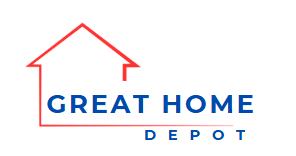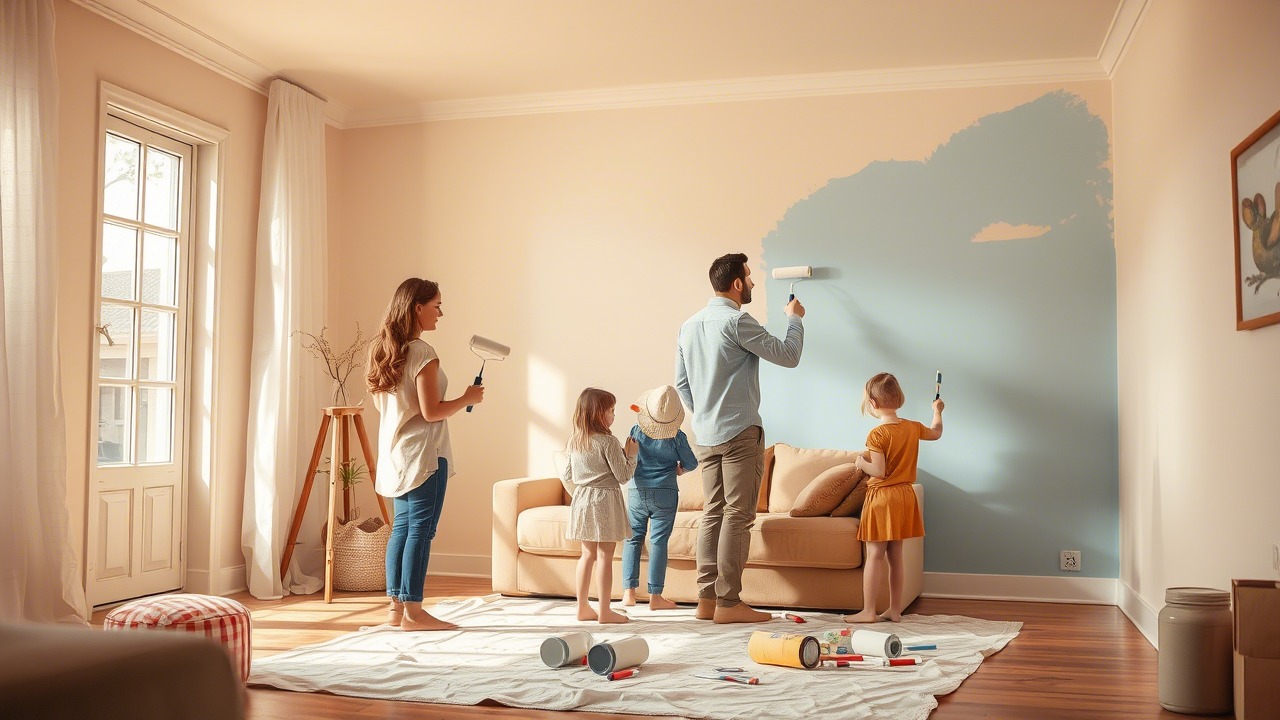Hardie board, also known as fiber cement siding, is a popular material for exterior home siding due to its durability, weather resistance, and low maintenance. However, like any exterior surface, it requires proper painting to protect it from the elements and keep it looking fresh for years. Choosing the best exterior paint for Hardie board is essential not only to maintain its aesthetic appeal but also to ensure its longevity and performance.
We’ll walk you through everything you need to know about painting Hardie board, including the best paints to use, essential considerations, and a step-by-step guide for a flawless finish.
Why Is Choosing the Right Paint Important for Hardie Board?
While Hardie board is a robust and weather-resistant material, it is still exposed to the elements, and a good coat of paint is necessary for the following reasons:
1. Weather Protection
A high-quality exterior paint will act as a protective barrier against the elements, including rain, snow, UV rays, and humidity. This is essential for maintaining the integrity of the Hardie board and preventing moisture from seeping into the material, which could cause damage over time.
2. Aesthetic Appeal
Hardie board comes in a variety of finishes, but it typically comes pre-primed. A fresh coat of paint will enhance the appearance of your home and can be an easy way to refresh or change the look of your exterior. Plus, there are countless color options to match your home’s aesthetic.
3. Longevity
Properly painted Hardie board can last for years, protecting it from the wear and tear caused by UV rays, dirt, and moisture. Choosing the right paint not only increases the lifespan of your Hardie board but also reduces the need for frequent repainting.
4. Enhanced Curb Appeal
A beautifully painted exterior can significantly increase the curb appeal of your home, making it look well-maintained and inviting. This can even increase the resale value of your property if you decide to sell it in the future.
What to Look for in the Best Exterior Paint for Hardie Board
Not all paints are suitable for fiber cement siding, so it’s important to choose one that works specifically for Hardie board or similar materials. Here are the factors you should consider when selecting the best paint:
1. Durability
Hardie board is designed to withstand extreme weather conditions, so the paint you choose should be equally durable. Look for paints that are resistant to fading, cracking, peeling, and chalking. High-quality exterior paints often come with added features like UV protection and mildew resistance.
2. Flexibility
Fiber cement siding expands and contracts with changes in temperature and humidity. It’s essential to choose a paint that is flexible enough to move with the siding without cracking or peeling. Flexible paints, such as acrylic-based paints, are ideal for this purpose.
3. Moisture Resistance
Hardie board is designed to resist moisture, but the paint you apply should enhance this property. Choose a paint that resists water and helps protect the siding from water penetration and mold growth.
4. Primer Compatibility
Fiber cement siding is typically pre-primed, but it’s always good to check if the paint you choose requires an additional primer layer. Some paints come with built-in primers, while others may need a separate primer to ensure optimal adhesion and durability.
5. Color Retention
Exterior paints are exposed to sunlight and weather, so choosing a paint that maintains its color over time is key. Look for paints that offer UV protection to prevent fading, especially in areas with intense sun exposure.
6. Ease of Application
Hardie board is smooth and generally easy to paint, but choosing a paint that is easy to apply and work with will make the job much easier. Consider whether the paint requires spraying, rolling, or brushing, and choose the one that fits your skills and preferences.
Types of Paints to Use on Hardie Board
There are a few types of paint that are well-suited for use on Hardie board. The most popular options include acrylic paints, latex-based paints, and elastomeric coatings. Let’s take a look at the best types:
1. Acrylic Latex Paint

Acrylic latex paint is the most commonly used type of exterior paint for Hardie board. This paint is highly flexible, allowing it to expand and contract with the fiber cement material without cracking. It also provides excellent coverage, durability, and water resistance, making it ideal for siding that needs to withstand the elements.
- Pros: Flexible, UV-resistant, quick-drying, easy to clean up (water-based).
- Cons: May require more coats for dark colors.
2. Elastomeric Coatings

Elastomeric coatings are thicker paints designed for surfaces that need extra protection from the elements. These coatings are highly flexible and form a waterproof layer that’s resistant to cracking, peeling, and weather damage. Elastomeric coatings are ideal for homes in regions with extreme weather conditions.
- Pros: Highly durable, waterproof, crack-resistant.
- Cons: Thicker consistency, requires a bit more effort to apply.
3. Oil-Based Paint

Oil-based paints were commonly used for exterior surfaces, but they’re less popular today due to their longer drying time and harsher odors. They offer excellent coverage and durability but tend to be more challenging to clean up. While oil-based paints are still a good choice for some applications, acrylic latex paint is usually the better option for Hardie board.
- Pros: Durable, excellent coverage.
- Cons: Long drying time, difficult cleanup, strong odor.
Top Paint Brands for Hardie Board
Now that we know what to look for in the best paint for Hardie board, let’s take a look at some of the top-rated brands that offer high-quality paints for fiber cement siding.
1. Sherwin-Williams Duration® Exterior Acrylic Paint

Sherwin-Williams is a trusted name in the paint industry, and their Duration® Exterior Acrylic Paint is an excellent choice for Hardie board. This paint is formulated to provide superior protection against harsh weather, fading, and moisture. It’s a high-quality, long-lasting option for homeowners looking for a durable finish.
- Best for: Long-lasting protection and UV resistance.
- Finish: Matte, satin, and gloss finishes available.
2. Benjamin Moore Aura® Exterior Paint

Benjamin Moore’s Aura® Exterior Paint is an advanced, high-performance paint designed to provide excellent coverage, durability, and color retention. It’s formulated with a unique resin technology that makes it resistant to fading and peeling. This paint is perfect for a fresh look on Hardie board and can withstand even the harshest weather conditions.
- Best for: Exceptional color retention and moisture resistance.
- Finish: Available in various finishes, including matte, satin, and high gloss.
3. Behr Premium Plus Ultra® Exterior Paint

Behr’s Premium Plus Ultra® Exterior Paint is a great value option for Hardie board. This paint combines the durability of acrylic with a mildew-resistant formula, making it perfect for exterior surfaces like fiber cement siding. It provides excellent coverage, so fewer coats are needed, and it comes in a wide range of colors.
- Best for: Budget-friendly, great coverage, and mildew resistance.
- Finish: Available in satin, eggshell, and flat finishes.
4. PPG Timeless® Exterior Paint

PPG Timeless® Exterior Paint is another high-quality option that offers excellent durability, protection from the elements, and color retention. This paint is formulated to resist fading and mildew growth, making it ideal for areas with high humidity or frequent rainfall. It’s available in both satin and semi-gloss finishes.
- Best for: High durability and mildew resistance.
- Finish: Satin and semi-gloss finishes available.
5. Glidden Premium® Exterior Paint

Glidden Premium® offers a solid, affordable exterior paint option for Hardie board. This paint is designed to resist cracking, fading, and peeling, and it provides long-lasting protection against the elements. It’s easy to apply and is suitable for various outdoor surfaces, including fiber cement siding.
- Best for: Cost-effective and reliable performance.
- Finish: Available in satin and flat finishes.
How to Paint Hardie Board: A Step-by-Step Guide
Painting Hardie board is a relatively simple process when done properly. Here’s a step-by-step guide to ensure your painting project is a success:
1. Clean the Surface
Before you begin painting, thoroughly clean the Hardie board to remove dirt, debris, and mildew. Use a power washer or a scrub brush with soapy water to clean the surface. If there is any mold or mildew, use a mixture of bleach and water to disinfect the surface.
2. Inspect for Damage
Check the Hardie board for any cracks, holes, or damaged areas. Repair any issues with a suitable filler or caulk. If necessary, sand the surface to ensure a smooth finish.
3. Prime the Surface (if needed)
Hardie board typically comes pre-primed, but if you’re dealing with a bare or weathered surface, you may need to apply a coat of primer. Choose a primer that is suitable for fiber cement and compatible with the paint you plan to use.
4. Apply the Paint
Use a brush, roller, or sprayer to apply the paint. Start from the top of the wall and work your way down to prevent drips. If you’re using a sprayer, use long, even strokes for a smooth finish. Allow the first coat to dry before applying a second coat for optimal coverage.
5. Allow the Paint to Dry
Let the paint dry completely before touching or applying any additional coats. Check the manufacturer’s recommendations for drying time, and make sure the weather conditions are dry and mild to ensure proper curing.
6. Maintain the Finish
Once the paint is applied, regularly clean the surface to remove dirt and grime, which can reduce the paint’s lifespan. If necessary, touch up the paint to keep your Hardie board looking fresh.
Frequently Asked Questions
1. How long does paint last on Hardie board?
Answer: With proper preparation and the right paint, a well-painted Hardie board exterior can last between 7 and 10 years before needing a touch-up or a new coat of paint.
2. Can I paint Hardie board myself?
Answer: Yes, painting Hardie board is a DIY-friendly project. With the right tools, paint, and preparation, you can achieve a professional-looking finish on your own.
3. Do I need to use a primer on Hardie board?
Answer: If the Hardie board is already primed, you may not need an additional primer. However, if you’re working with bare or weathered fiber cement, it’s recommended to apply a primer to ensure better adhesion.
4. What is the best finish for Hardie board?
Answer: Satin and semi-gloss finishes are often the best choices for Hardie board, as they provide a nice balance between durability and aesthetic appeal.
5. Can I use oil-based paint on Hardie board?
Answer: While oil-based paint can be used on Hardie board, it’s typically better to opt for an acrylic latex or elastomeric paint, as they offer greater flexibility, UV resistance, and easier cleanup.
6. How many coats of paint do I need for Hardie board?
Answer: Most exterior paints require at least two coats for optimal coverage and durability. However, some high-quality paints may provide excellent coverage with a single coat.
7. Can I pressure wash Hardie board before painting?
Answer: Yes, you can use a power washer to clean Hardie board before painting, but make sure to use a low-pressure setting to avoid damaging the surface.
Conclusion
Choosing the best paint for your Hardie board exterior is crucial for protecting your home from the elements and ensuring it remains visually appealing. High-quality acrylic latex paints, such as those from Sherwin-Williams, Benjamin Moore, and Behr, are excellent choices for their durability, flexibility, and weather resistance. Proper preparation, including cleaning, priming, and applying the paint correctly, will help extend the life of your paint job and keep your Hardie board looking great for years to come.


Leave a Reply